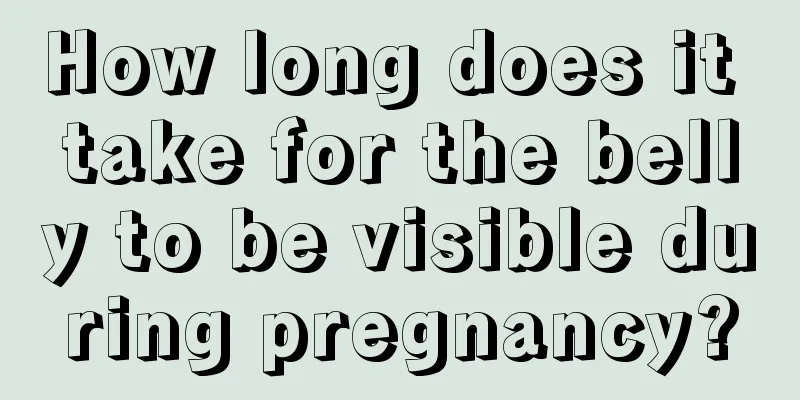Placenta double vertex at the bottom of the uterus at four and a half months of pregnancy

|
Expectant mothers pay great attention to their physical health during pregnancy, but there are many times when our physical condition is not determined by ourselves. For example, some pregnant women will find that the placenta is located at the fundus of the uterus when they are four and a half months pregnant. This is a serious medical manifestation of low-lying placenta. There is a certain risk for Yunfu. So what should we do when pregnant women encounter this situation? Let’s take a look together below. 1. What is the reason for the placenta being located at the bottom of the uterus? A low-lying placenta means that the placenta is now located relatively close to the cervix. This is not something that can be prevented in daily life and you can only accept it and let nature take its course. Wait until around 28 weeks of pregnancy to see if the position of the placenta has changed. In our daily life, we should still pay attention to increasing rest as much as possible, avoid strenuous exercise and fatigue, and refrain from sexual intercourse. 2. What is low-lying placenta? A low-lying placenta is a type of placenta previa, which can be divided into three types: complete placenta previa, partial placenta previa, and marginal placenta previa. When the placenta is low, as the pregnancy progresses, especially in the late pregnancy or after delivery, the lower segment of the uterus gradually stretches, the cervical canal disappears, and the cervical opening dilates, but the placenta does not develop with the expansion of the cervical opening. As a result, it will detach from its attachment point, and blood vessels will rupture and vaginal bleeding will occur. 3. The hazards of low-lying placenta When the placenta is low, as the pregnancy progresses, especially in the late pregnancy or after delivery, the lower segment of the uterus gradually stretches, the cervical canal disappears, and the cervical opening dilates, but the placenta does not develop with the expansion of the cervical opening. As a result, it will detach from its attachment point, and blood vessels will rupture and vaginal bleeding will occur. When the amount of bleeding is heavy, the pregnant mother will develop anemia; when the bleeding is severe, she may go into shock and faint, and the baby in her belly may suffer from lack of oxygen, respiratory distress, or even death. Although this bleeding depends on the type of placenta previa, the chance of heavy, recurrent early bleeding is relatively low in low-lying placentas. However, during labor, each uterine contraction will pull the lower segment of the uterus upward, often causing increased bleeding and resulting in serious consequences. 4. Precautions for low-lying placenta Pay attention to rest, avoid overwork, and do not use excessive force when changing body positions, including when defecating. Avoid constipation and sexual intercourse. Go to the hospital immediately if you notice bleeding. |
<<: How long does it take for abdominal pain to occur after there is blood in the late pregnancy?
>>: Dizziness during pregnancy
Recommend
What causes kidney deficiency in girls?
In our lives, not only men are prone to symptoms ...
What causes women's sexual indifference?
Everyone needs to pay attention to the problem of...
The dangers of sitting for a long time after childbirth
Confinement after childbirth is a widely spread c...
Why do women sweat when they sleep at night?
I believe that some female friends will sweat whe...
What should you pay attention to when extracting teeth during breastfeeding?
There are many problems with people's teeth. ...
How to mince garlic evenly with a knife without leaving your hands sticky or smelly
Minced garlic is often used in cooking. Sometimes...
What is the cause of lateral breast hyperplasia?
Breast hyperplasia is a common breast disease amo...
Why does it hurt when having sex but not when having sex?
In fact, this is typical pain during sexual inter...
Inner thigh pain during late pregnancy
Pregnancy is a big event for every woman. Everyon...
When is the best time for pregnant women to start taking calcium supplements?
Nowadays, every family has only one child, and ma...
I just finished peeing and I want to pee again
In recent years, we have found that although our ...
What is the direction of the sunny side when fishing in winter? Why should we look for the sunny side when fishing in winter?
The water temperature is relatively low in winter...
Malnutrition in this part of women can actually induce cancer
For a long time, there has been severe itching of...
Causes of Urine Leakage in Women
There are many reasons for female urinary inconti...









